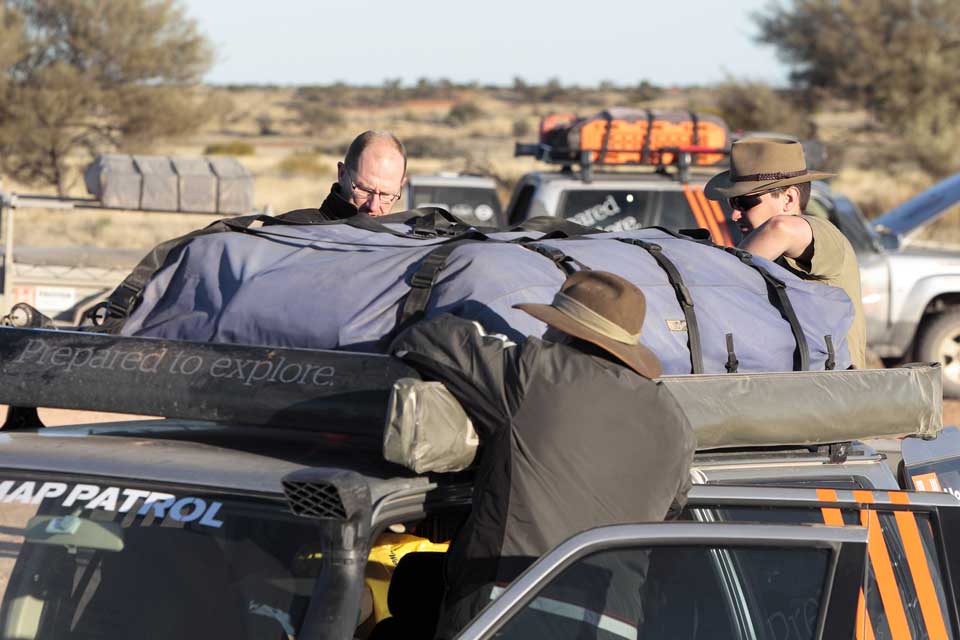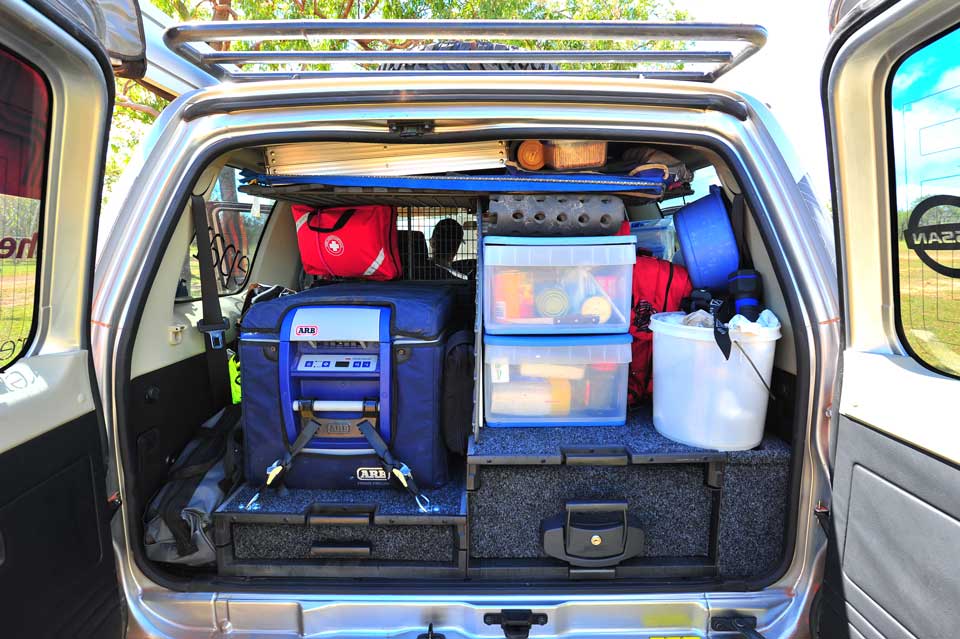:
4WD Vehicle Packing Tips
 Maximise cargo accessibility, safety, and time on the road with these 4WD vehicle-packing tips to simplify trip preparation.
Maximise cargo accessibility, safety, and time on the road with these 4WD vehicle-packing tips to simplify trip preparation.
1. Heavy items should be loaded first to initiate a good centre of gravity within your vehicle. This takes the strain off of your vehicle’s suspension while making your 4WD a safer vehicle to drive.
2. Make sure the weight of your cargo is distributed as evenly as possible, so there is no part of the cargo area taking undue strain. Over the course of a long trip and possibly thousands of kilometres, small imbalances can add up and cost you in the end, whether that is in the form of vehicle control, safety or mechanical costs.
3. Fit a cargo barrier within your vehicle, no matter how low you have your cargo stacked. While traversing Australia’s many off-road destinations, there is a risk of accidents such as rollovers, which can be made much worse by cargo flying freely from behind your head.
 4. Roof racks are perfect for trips that necessitate a lot of cargo. Roof racks should be placed as far forward as possible, not to counteract the weight in the cargo area but to take some pressure off the rear suspension.
4. Roof racks are perfect for trips that necessitate a lot of cargo. Roof racks should be placed as far forward as possible, not to counteract the weight in the cargo area but to take some pressure off the rear suspension.
5. Use your roof rack to pack light but bulky items. This saves you having to pack them in the priority space inside the vehicle, and avoids raising your four-wheel drive’s centre of gravity to the point where it compromises safety. Ideally, the heaviest item that should be loaded on a roof rack is a spare wheel and tyre assembly kit.
Balance these bits of advice with common sense to prioritise your cargo by virtue of importance and frequency. Whether it’s for one-off vehicle safety, saving time each day from unpacking and repacking, or simply keeping a structure for how your cargo should fit together, learning the systems of efficient vehicle packing will save you in the end.










0 comments